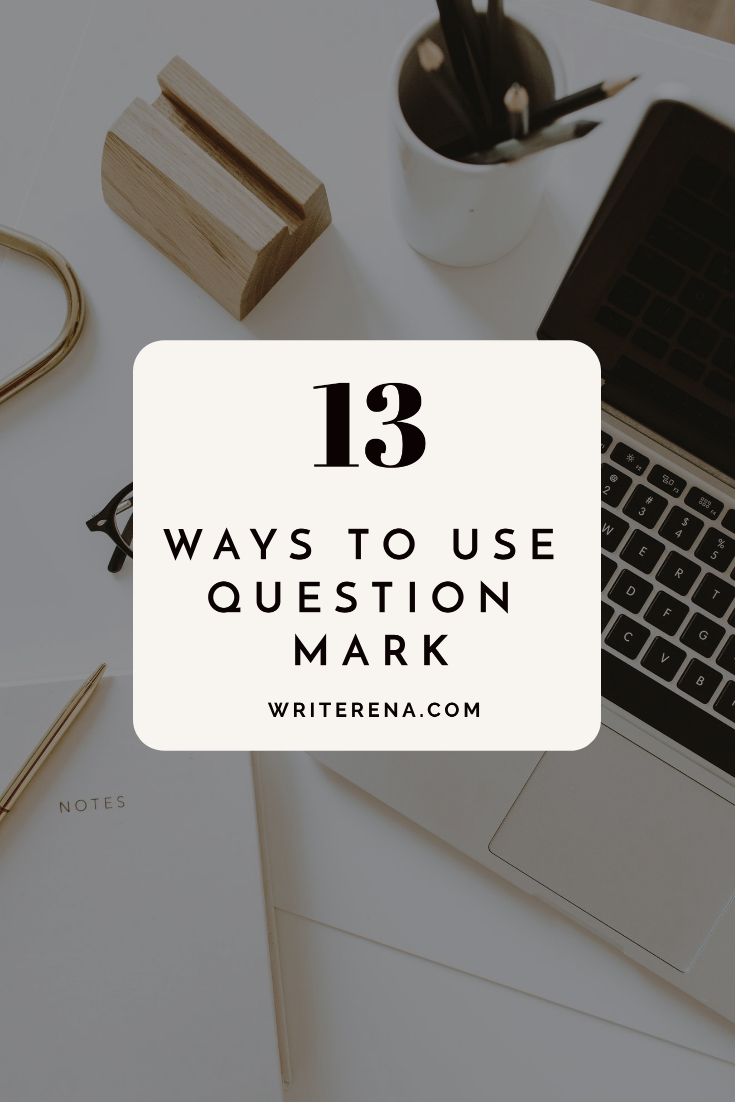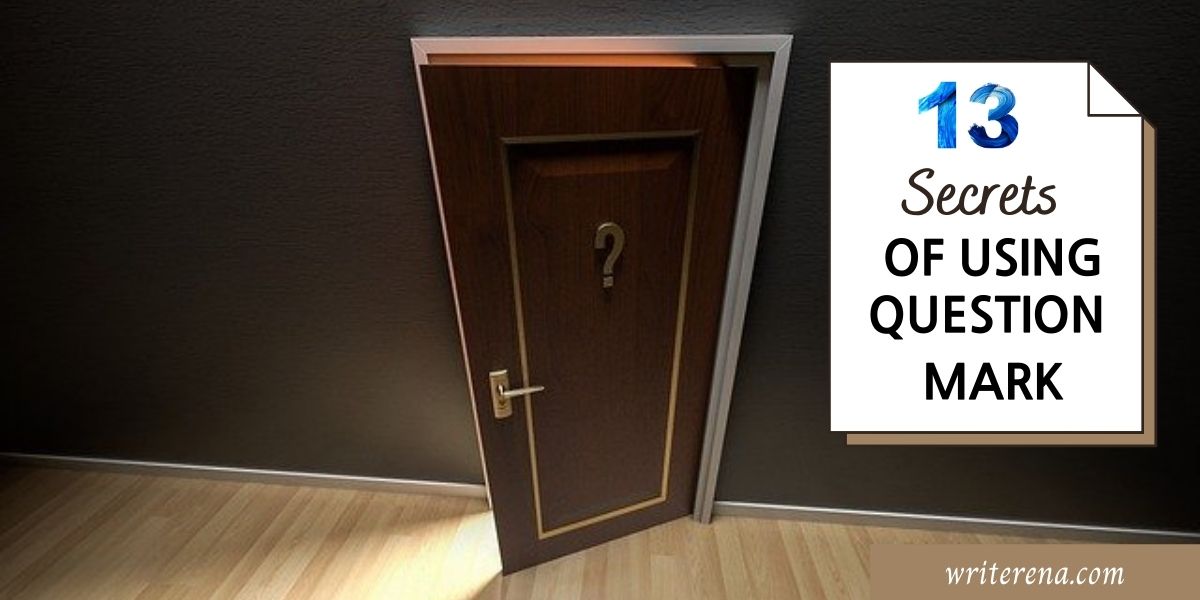Question mark is one of the easiest and everyone’s favourite punctuation mark in grammar. That’s because it doesn’t have any complications in using it.
Remember these other grammar rules for writing
We all know where to put a question mark!
At the end of a sentence that poses a direct question. Isn’t it?
Yet, there are some places where there are no uses of question mark, despite being a question. Do you know such instances?
If not, you’ll come to know by the end of this guide. So, gear up to learn the 13 top secrets about the uses of question mark.
What is a question mark?
A question mark is a punctuation which is used at the conclusion of a sentence to raise a question. In other words, question mark is also known as an ‘interrogation mark’ or ‘interrogation point.’
The primary purpose of the question mark is to express the uncertainty or doubtful state of the speaker.
We can easily identify it as an interrogative sentence when it ends with a question mark (?).
What is a question mark used for?
We think that we can use question mark only at the terminal part of the sentence showing the interrogation.
However, there are still a few secrets about the uses of question mark which you don’t know.
And now, I’ll reveal those secrets!
Uses of question mark – where it is compulsory?
1. Direct question
ALWAYS use a question mark at the end of a sentence when asking a direct question. This clearly indicates that you are seeking information.
Examples:
- What did you do last night?
- How is life treating you?
- When will they issue the hall tickets?
2. Statement to question
Sometimes, placing a question mark at the end can change a statement into a question. This question often means that the speaker assumes something and waits for a reply.
Examples:
- You aren’t going abroad?
- She quit her job just to stay home?
3. Question tags and queries
We use question mark in a sentence which has question tags or a query about something. It is quite informal.
Examples:
- It is cold outside, isn’t it?
- Text me once you reach home, OK?
4. Question mark with commas
When a question is enclosed in a statement, pay attention and separate it with a comma.
Examples:
- The bus may come late, if so, can we take a cab?
- Can I ask, why I got suspended without proper accusation?
In the above listed case, if the interrogation comes first, the question mark replaces the comma and is placed in the middle.
Examples:
- “Is the top worth enough to buy?” I wondered.
- “What is the first thing to eat in the morning?” The kid asked.
5. Set of questions
When there are a series of questions, insert an interrogation point for each question.
Examples:
- What would you like to have? Noodles? Fried rice? Shawarma?
- What is content writing? What are its types? Is content writing an excellent career choice?
6. In rhetorical questions
Use question marks after a rhetorical question. It is a question for which the speaker doesn’t expect a reply. It is often persuading and can be found in literature.
Examples:
- If winter comes, can spring be far behind?
- Will no one tell me what she sings?
7. Uncertainty
We can use question mark within a parenthesis (?) when a number or a date is not known surely.
Example:
William Shakespeare 1564 (?) – 1616 was a great English playwright, poet, and an actor.
8. Underline/Italicise
If a question mark comes along with the italicised or underlined title, don’t forget to italicise/underline the question mark too.
Examples:
- Do you like Oklahoma?
- Have you ever read Macbeth?
9. Replace period
If the question mark is part of the title, you can simply end it with that question mark without adding a period to it.
Example:
- I slept while reading the novel. Why Didn’t They Ask Evans?
Uses of question mark – where and what to avoid?
10. Never use a question mark in an indirect speech which has interrogations
Examples:
- I asked my mom if I could go out.
- I wondered whether they would pass their semester exams.
11. Do not use a period after a question mark
Examples:
- Did she move out?
- Have you had your breakfast?
12. Do not use a comma after question mark
Example:
“How did you finish this?” my friend asked
13. If the question mark is part of the quoted phrase, put the question mark before the quotation
Example:
“Will it work?” I murmured.
If the question mark applies to the entire sentence, place it after the quotation mark.
- Did you order “sheet masks”?
- Have you ever been to the concert of “the chain smokers”?
Final thoughts
With the proper understanding of the sentence, placing a question mark in a sentence won’t feel like a big deal.
So, keep these secrets and rules about the uses of question mark when you write your content the next time.
What other punctuation marks confuse you while writing? Learn the rules of their use by clicking below.

The Ultimate Content Writing Course for Beginners
I teach the rules about using other punctuation marks in this course.
Bookmark this post for later reading and share with your writer friends.

- 13 Top Secrets you Didn’t Know About the Uses of Question Mark - January 4, 2021
- Understand What is Content Writing Before You Regret - December 7, 2020
- Writing Essays in English? 5 Easy Tips to Overcome your Struggle - November 16, 2020

